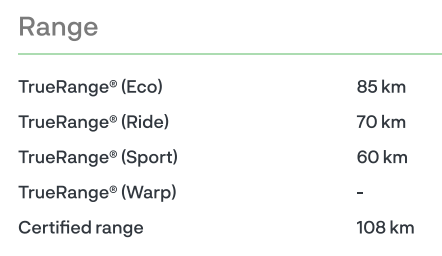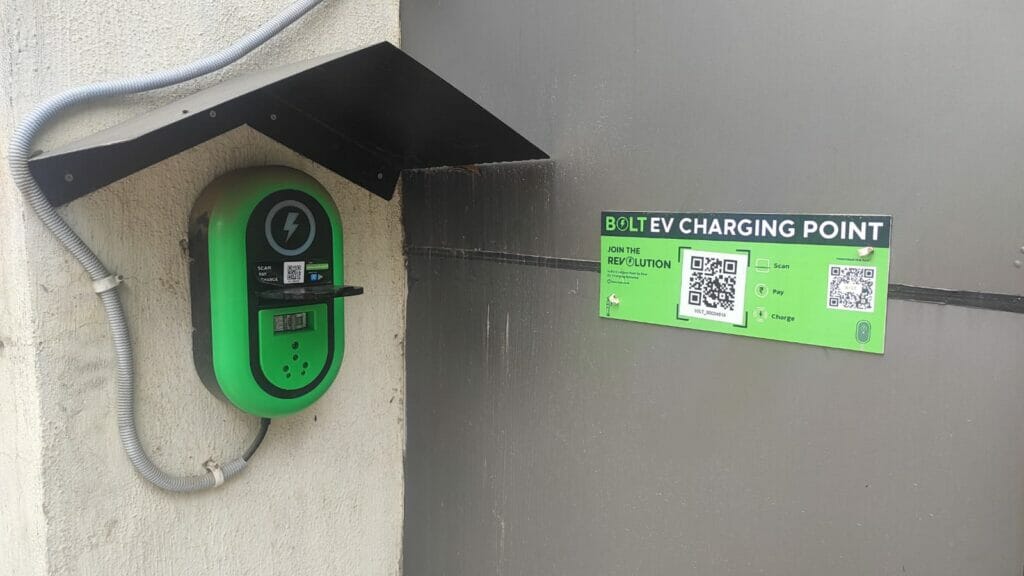“Rising petrol prices motivated me to buy an electric two-wheeler in Chennai,” says V Akash, who rides an Ather 450X electric scooter.
S Kaushik, who owns a Hero Electric Optima HX scooter, has a similar tale to narrate. “I wanted to try something new. Plus, the subsidy also substantially lowered the cost, making it a very viable option. There was a discount of around Rs. 40,000 to Rs. 45,000 when I bought my scooter last year,” he says.
Many electric two-wheeler users have almost the same motivation for buying an EV. “There is hardly any maintenance cost. We do not need to service them frequently like petrol bikes, if maintained properly,” says Akash. “Google maps on vehicle dashboard was a brownie point,” he adds.
Cost savings being a key consideration behind the decision of most riders to switch to electric two-wheelers, and electric vehicles (EVs) in general, different government bodies have decided to roll out incentives for people to switch to EVs from fossil fuel-run vehicles.
Several central and state subsidies are in place to offset the cost of switching to electric vehicles.
- The Union Government provides up to 40% subsidy for electric two-wheelers, under the FAME II, or Faster Adoption and Manufacturing of (Hybrid and) Electric vehicles scheme.
- The Tamil Nadu Ministry of Power has brought about a 100% exemption on road tax, apart from a waiver on electric vehicle registration charges.
The Chennai Climate Action Plan draft talks about incentivising more people to use electric two-wheelers. The Chennai Metro Rail Limited does not charge for electric two-wheeler parking. The civic body along with TANGEDCO is planning to set up common EV charging stations in Chennai, apart from campaigning on going electric.
While many such nudges are in place for people to convert to EVs in Chennai, users should still understand and be aware of some facts and features before they invest in an electric two-wheeler.
Read more: Why don’t we see electric buses on Chennai roads?
Key features to consider in electric two-wheelers in Chennai
Registered vs non-registered vehicles
People who do not have a driving license, insurance and vehicle registration must opt for non-registered EVs, as per the Central Motor Vehicle Rules (CMVR). These are low-speed vehicles that can go up to 25 km/h and have a power output of 250 W.
Some brands like Hero and Okinawa offer non-registered vehicles, but other brands like Ather do not have electric two-wheelers for people without driving licenses.
Registered EVs have a higher top speed and power output. For example, Ather has a top speed of 80 km/h and a power output of 3.3 kW to 6.2 kW across models. The users we spoke to have registered EVs.
Battery life and charging
Predominantly, EVs come with a lithium-ion battery, according to users and EV dealers in Chennai.
“Earlier, it used to be lead acid battery. But now, the battery is similar to that in our mobile phones,” says Raunak, a manager of Sahara Evols – Madras E Ventures, an EV dealer in Guindy. “A user can charge it for around four to six hours, depending on the brand and model for a full charge,” he says.
“Some electric two-wheeler brands in Chennai may not come with a removable battery. A removable battery is important if you think your bike body will last longer than your battery. Otherwise, you’ll have to throw the whole thing out,” notes Rohit Nair, who uses Benling Aura EV in Chennai.
Some EV models have fast-charging batteries, which take lesser time to charge than other models. “But they reduce the vehicle’s battery capacity over time,” says Raunak on the downside of fast charging.
Charging an EV takes around two to four units of electricity, say the EV dealers. “A person can charge it at home with a charger that comes along with the EV, similar to charging your mobile phone,” says J Suresh, owner of Nexgen Electric Bikes, a dealer of Okinawa electric scooters, based in Thousand Lights.
“Although there is an auto cut-off, it is not advisable to charge your EVs for a whole night. If there is any voltage fluctuation, it can hamper the battery,” cautions Suresh.
Both Akash and Kaushik say they charge their electric two-wheelers twice or thrice a week, depending on the usage.
Read more: How to keep the electricity bill of your Chennai home in check
Range and modes
Mileage for an EV is measured in terms of range. Range refers to the distance that an electric vehicle can cover before the battery needs to be recharged.
“With 100% charge, the EV bike brochure might show that it can go up to 80 km, but it usually goes up to 100 km,” says Akash.
“But for a single user, the range may be higher than when a person rides with a pillion. This is because the weight of the pillion rider can increase the energy consumption, thus reducing the number of kilometres the vehicle can run on a full battery charge,” explains Raunak.
Most brands of two-wheelers come with modes like ‘Eco’, ‘Ride’ and ‘Sports’ that the rider can switch between, depending on his speed. The ‘Eco’ mode reduces the maximum speed and increases the range of the bike.
Akash, who has all three modes on his two-wheeler, explains, “The pick-up [acceleration] of the bike in ‘Sports’ mode is better than that in ‘Eco’ mode. But the latter will retain charge better and have better range. In Sports mode, the range of the vehicle goes up to 120 km, and in Eco mode, it can go up to 140 km on full charge.”

Price and subsidy
“My EV cost more than Rs. 1 lakh. With the subsidy, I paid only Rs. 75,000,” says Kaushik. “If a person is buying an EV, then their Aadhaar card details are taken for the subsidy. For one Aadhaar card, the subsidy can be applied only once.”
But not all brands have subsidies. Raunak says that he deals in brands where the FAME-II scheme is not always applicable.
“When the local EV manufacturing picks up, the subsidy could be stopped,” says Raunak. “Without subsidy, EVs are slightly more expensive than petroleum vehicles.”
Warranty
Most of the EV brands give a three-year warranty for the two-wheeler’s battery, say users. “Some brands give a two to three year warranty for the motor and controller too,” says Raunak. After that, the customer has to pay for parts, if a replacement becomes necessary.
Concerns around EVs in Chennai
The case of fires
“Recently, I was riding my EV in the rain. On the way, I sensed my scooter emit a spark, and it started to smoke. As a precaution, I walked the vehicle home before having it checked out,” says Kaushik.
One of the reasons EVs catch fire is that a small battery holds a lot of energy. To prevent accidents, the Union Transport Ministry has issued safety rules for electric-vehicle batteries that every manufacturer must adhere to.
Other users do not see EV-fire accidents as a red flag. “Those are just rare incidents of EVs catching fire. Normal petrol vehicles also catch fire,” says Akash. “It all depends on how we handle the vehicle without much wear and tear.”
What if the vehicle stops mid-way during a ride?
This is a major concern many users have. Electric two-wheelers are not like fossil fuel-run ones, which one can just walk to the nearest petrol bunk to fuel up. It is almost certain that one will find a petrol station within a radius of 1-2 km from any point in the city. The same cannot be said for an electric charging station or point.
However, “there is an app called “BOLT – EV Charging Network which people can download on their phones to locate EV charging stations across Chennai. I urge my customers to use that,” says Suresh.

In cases of faults in the EVs, Suresh and Raunak have roadside assistance personnel who bring the EV to their service centres.
“But local automobile mechanics do not handle EVs, and that is a disadvantage,” says Kaushik.
No local manufacture of spare parts and long servicing time
“In the past, my EV had to be serviced twice. It took two months for the vehicle to come back. It is hard to get spare parts since they are not locally made,” narrates Kaushik.
Raunak and Suresh also provide services for vehicles apart from sales. “I try to address minor service issues within a day or two. If the parts need to come from the manufacturer, it will take around 10 to 15 days,” says Suresh.
“Some parts of EVs, including battery, are made in China,” says Akash. “Every three years, we may want to replace the batteries, and it can take around Rs 70,000 for that.”
“If a person does not maintain the EV properly, then issues will definitely develop. For instance, I advise my customers not to keep the EV in puddles during rain. Rainwater may get inside and the parts could get rusted,” notes Suresh.
Another concern flagged by users is that the imported vehicles may not be tested for local climates, and they could heat up due to the hot weather in Chennai.
To increase the number of electric two-wheeler takers, Chennai needs to have more local manufacturers of EVs. This will lower input costs and help the companies test their vehicles in local climates. Subsequently, more people can be encouraged to convert to EVs from fossil fuel-run vehicles.
While the number of electric two-wheelers in Chennai is on the rise, it is important for potential buyers to be fully aware of the advantages and disadvantages of purchasing them. Instructions for maintenance and care must be strictly adhered to, to avoid any mishaps.